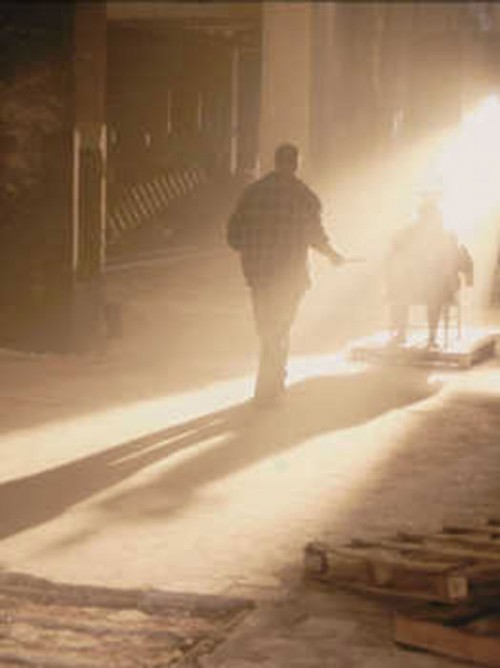The remaining white space between TV signs is raising the trust of sparing lives adrift and demonstrating broadband for remote groups.
“Come in, Solent Coastguard…” It is the third time the coxswain of the Freshwater autonomous raft, Jeremy Blake, has attempted to overcome. He is utilizing VHF radio, an innovation basically unaltered for a century.
It was from the bluffs above Freshwater Bay on the Isle of Wight that Guglielmo Marconi initially demonstrated that radio could be utilized for two-way remote correspondence with boats adrift.
In the years since Marconi started his tests in 1897, marine radio has spared incalculable lives yet is a long way from great.
“Basically we’re utilizing the same innovation,” says Mr Blake. “It’s got more modest and more dependable however in any case we’re restricted by viewable pathway. We can just have one-path correspondence at once, and in the event that another person is chatting on the radio that will overwhelm us in the event that they’ve got a stronger sign.
“So now and then we can’t impart. We regularly have issues when somebody is perched on their radio, and transmitting, and they are shutting out the various channels.”
‘Prime land’
That could all be going to change. The raft has been partaking in a trial of another engineering that supporters say couldn’t just spare lives yet bring superfast broadband to rustic groups that so far have been cut off from the data age.
It is called TV white space and exploits unused parts of the range held for TV transmissions.
“This is prime range land,” says Jim Beveridge, of Microsoft, who ran the Freshwater trial.
“The supporters weren’t inept. They put their transmitters in the place that provided for them best scope for the most minimal conceivable force to achieve the greatest number of viewers.”
That is the reason this piece of the range is hard controlled – you require a permit to telecast on these frequencies. Yet there is heaps of unused room here, either segments left deliberately clear to go about as a cushion between the TV signs or space abandoned when administrations went computerized.
So what could this accomplish for the raft? Mr Beveridge is clear that it could change interchanges for its team.
“It could provide for them voice, it could provide for them feature, and later on it could additionally send data from restorative machines once again to base, so if there’s a crisis adrift you can send that data back, so they realize what’s in store,” he says.
Always overhauled
White-space engineering is conceivable as a result of advances in numerous regions of science – yet the most vital is GPS.
Any gadget intended to utilize the empty parts of the range need to know where it is, and after that can allude to a continually redesigned database to discover which frequencies are accessible and at what power.
Prof Robert Stewart, of the Center for White Space Wireless Communications at the University of Strathclyde, says it is all in regards to the more effective utilization of limited assets.
“In the event that I went down to Manchester, the TV multiplex will be in a certain band of frequencies, and we won’t utilize that band of frequencies as a part of Glasgow or Newcastle or different parts of the nation,” he says.
“However in the event that they are utilizing something as a part of Manchester for television on, we’re not going to meddle with it here in Glasgow on the off chance that we pop up a low-level sign and utilize the range that is overall unused.”
Prof Stewart says the innovation meets expectations and is far less expensive than current alternatives, for example, running miles of lavish link. It is as of now up and running in the US and Singapore.
Strathclyde University has worked with accomplices including BT and the BBC to bring superfast white-space broadband to the Isle of Bute in the Firth of Clyde.
Broadband obstructions
Isle of Wight broadband supplier Click4internet at present uses 5ghz wi-fi indicators to shaft the web to remote houses.
CEO Fraser Munro says: “At this time we utilize radio transmissions to defeat the issue of individuals in country ranges who have long or exceptionally old phone lines. Broadband just won’t go down the old copper lines exceptionally well.
“So we put a beneficiary on their top and we transmit their broadband through that collector. The issue with the current broadband we utilize is that it doesn’t experience obstructions like trees or dividers extremely well, so in the event that somebody exists in an exceptionally lush range its exceptionally troublesome for us to achieve them. The new white-space innovation, in light of the fact that its a lower recurrence, will permit us to infiltrate trees to experience dividers.”
So what’s ceasing this unrest?
Ofcom, which controls the show range, has approved the trials yet would need to permit the white spaces to be utilized completely. While it is to a great degree excited about making the innovation work, Ofcom must make certain it won’t meddle with the TV indicators.
Phillip Marnick, leader of the range strategy bunch at Ofcom, has told Newsnight he expects white-space innovation to be lawful in Britain from one year from now.

